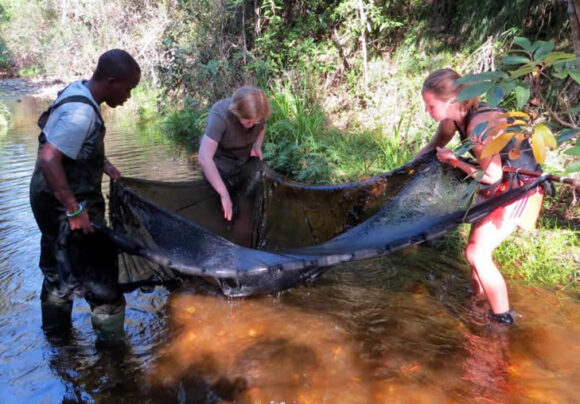Genetic analyses of a population of invasive French platannas suggest they came from all over South Africa. A study recently published in the electronic journal PeerJ by C·I·B senior researcher, Dr John Measey, and European colleagues investigated the origin of invasive populations of African clawed frogs (Xenopus laevis), also known as platannas.

The origin of an invasive population helps develop appropriate management strategies, and this can be important when invasive species are from a mega-diverse region, like South Africa, which spans temperate and tropical climates. Data from DNA of invasive African clawed frogs in France and Portugal were compared to DNA from native populations in their distribution in southern Africa. Surprisingly, the French invasion is comprised of DNA from two different populations of African clawed frogs, suggesting that these animals had been brought to France from multiple collection sites all over the country. In all other invasive populations where this has been studied, the invasions derive from the southwestern Cape which ties in with historical evidence.
This new evidence suggests that part of the relative success of African clawed frogs in France could be related to their large genetic diversity which could provide them with an advantage. However, invasive populations do not necessarily rely on high genetic diversity in order to be successful, as show with other invasive populations of African clawed frogs in Chile and Sicily.
The European team will continue to investigate the invasive potential of French and Portuguese populations in a collaboration funded by the European Union: INVAXEN.
“The genetic diversity of platannas in France is greater than any one population in South Africa” said John Measey, Senior Researcher at the C·I·B. “The invasive population may have a greater genetic basis on which to invade a larger area of Europe.”
Read the paper



